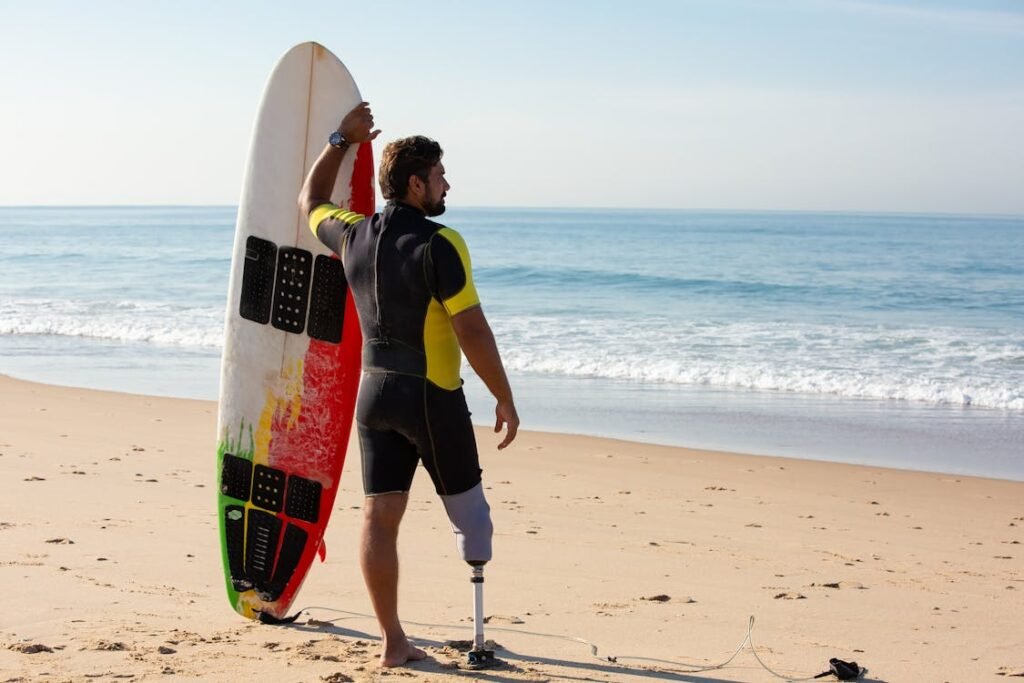Losing a leg and part of the pelvis is a life-changing experience, and finding the right prosthetic is a crucial step toward regaining mobility. Hemipelvectomy prosthetics are specially designed to restore balance, movement, and independence for individuals who have undergone this complex amputation. Choosing the right prosthetic is not just about replacing the missing limb—it’s about finding a solution that offers comfort, stability, and ease of movement.
Since hemipelvectomy amputations remove not only the leg but also part of the pelvic bone, standard prosthetics do not provide the support needed for everyday activities. A well-designed prosthetic must compensate for the missing hip joint, distribute weight evenly, and allow for a natural walking motion. Modern technology has made these prosthetics lighter, more adaptable, and more comfortable than ever before.
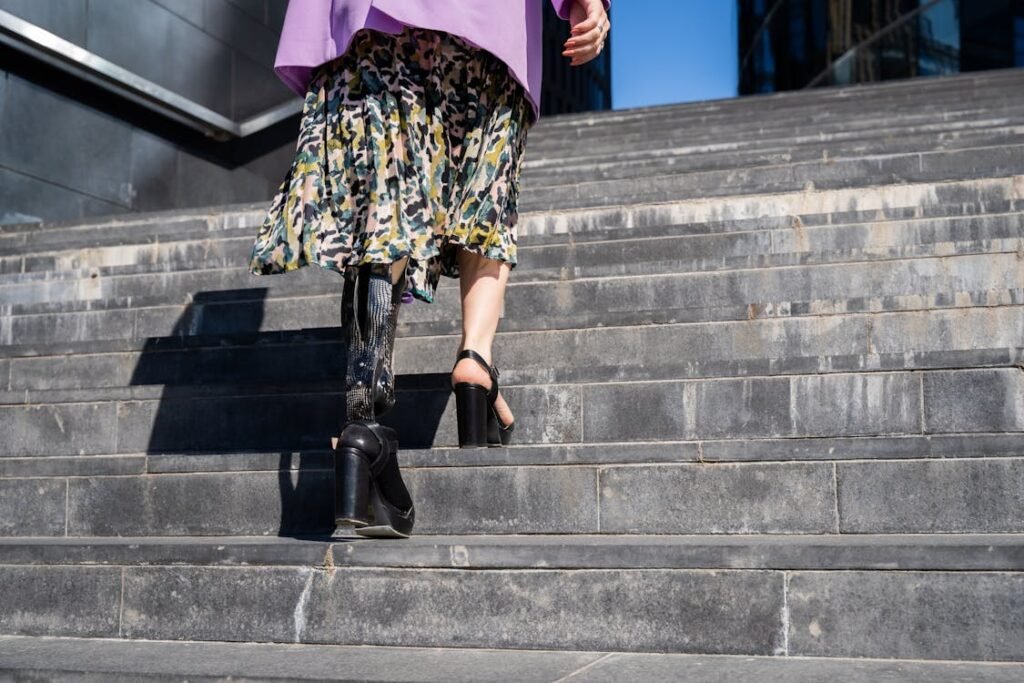
Understanding Hemipelvectomy Prosthetics
Hemipelvectomy prosthetics are among the most complex prosthetic solutions because they must replace not only the leg but also the hip joint and part of the pelvis. Unlike standard prosthetics that attach below the knee or at the thigh, these devices require a custom-made socket that extends over the waist to provide stability and support.
Since the natural hip joint is no longer available to guide movement, the prosthetic must be designed to help users shift their weight properly, maintain balance, and walk smoothly.
How Hemipelvectomy Prosthetics Work
A hemipelvectomy prosthesis is made up of several components, each designed to mimic the function of the missing limb and provide maximum mobility. The most important part is the custom-fitted socket, which wraps around the torso and helps distribute body weight evenly.
This is crucial because, without a well-fitted socket, the prosthetic can become uncomfortable and difficult to use.
The prosthetic leg includes an artificial hip joint that allows movement, a knee joint for bending, and a foot that provides stability while walking. Some prosthetics use mechanical joints, while others incorporate microprocessor-controlled components that adjust automatically to different walking speeds and terrains.
These advanced systems make movement smoother and reduce the effort needed to walk.
Adapting to a New Way of Moving
Since hemipelvectomy prosthetics replace both the leg and hip, users must learn a new way of moving. The absence of a natural hip joint means that walking requires different muscle groups and a shift in weight distribution.
Physical therapy is essential in this process, helping users build strength and coordination to move confidently.
Walking with a hemipelvectomy prosthetic often involves using the pelvis and core muscles to swing the leg forward. At first, this motion can feel unnatural, but with practice, users develop a rhythm that allows them to walk efficiently.
Some users start with crutches or parallel bars for support before transitioning to independent walking.
Everyday movements like standing up, sitting down, and climbing stairs also require adjustments. Since balance is different from before, users learn how to shift their weight correctly to avoid falls.
With time and training, most individuals can regain mobility and return to an active lifestyle.
The Role of Comfort in Choosing a Prosthetic
One of the biggest challenges with hemipelvectomy prosthetics is achieving a comfortable fit. Because the socket wraps around the waist and lower torso, pressure points can develop if the fit is not perfect.
A poorly fitted prosthetic can cause discomfort, skin irritation, and even long-term posture problems.
A well-designed prosthetic is made to fit the user’s specific body shape, ensuring even pressure distribution and reducing the risk of discomfort. Materials like lightweight carbon fiber or medical-grade silicone help create a balance between strength and flexibility, making the prosthetic both durable and comfortable.

Choosing the Right Hemipelvectomy Prosthetic
Finding the right hemipelvectomy prosthetic is about more than just replacing a missing limb—it’s about ensuring comfort, mobility, and confidence in daily life. Since this type of prosthesis is complex, it must be custom-fitted to the user’s body and designed to support natural movement.
Several key factors play a role in selecting the best option, from the fit of the socket to the type of joint mechanisms used.
The Importance of a Well-Fitted Socket
The socket is the foundation of any hemipelvectomy prosthesis. It wraps around the waist and lower torso, holding the prosthetic leg securely in place. A poorly fitted socket can cause pain, skin irritation, and difficulty in movement.
Since the weight of the body is distributed differently after a hemipelvectomy, the socket must be designed to provide maximum support without creating pressure points.
Prosthetists use advanced scanning and molding techniques to ensure the socket fits perfectly. Some sockets include gel liners or padding to improve comfort and reduce friction.
A good fit allows the user to move freely without excessive rubbing or discomfort. Over time, adjustments may be necessary to accommodate changes in body shape or weight.
Mechanical vs. Microprocessor-Controlled Joints
Hemipelvectomy prosthetics come with either mechanical or microprocessor-controlled joints. Mechanical joints are basic hinge-style components that allow movement but require the user to manually control their motion.
These are durable and reliable but require more effort while walking.
Microprocessor-controlled joints, on the other hand, use advanced sensors to adjust the movement of the prosthetic based on walking speed and terrain. These intelligent systems mimic the way a natural hip and knee function, making walking smoother and more energy-efficient.
While they tend to be more expensive, they provide a much more natural walking experience and reduce strain on the rest of the body.
The Role of the Prosthetic Foot
The foot plays a crucial role in balance and stability. A good hemipelvectomy prosthetic foot should absorb shock, provide traction, and help with the push-off motion needed for walking.
Some feet are designed for everyday use, while others are specialized for high-impact activities like running or hiking.
Energy-returning feet, made from carbon fiber, store and release energy with each step, making walking feel more natural. Other designs focus on comfort and flexibility, ensuring the user can walk on different terrains without discomfort.
The choice depends on the user’s lifestyle and daily activity level.
Weight and Material Considerations
Since hemipelvectomy prosthetics replace an entire leg and hip, keeping the prosthetic as lightweight as possible is important. Heavy prosthetics can lead to fatigue and difficulty in movement.
Modern designs use materials like carbon fiber, titanium, and medical-grade plastics to keep the prosthetic strong yet lightweight.
A well-balanced prosthetic reduces the energy needed to walk and prevents strain on the spine and remaining muscles. Working with an experienced prosthetist ensures that the right materials and components are selected for optimal mobility.

Rehabilitation and Adjusting to a Hemipelvectomy Prosthetic
Adapting to a hemipelvectomy prosthetic is a gradual process that requires both physical and mental adjustment. Since the body moves differently without a natural hip joint, users must learn new techniques for walking, balancing, and performing daily activities.
Rehabilitation plays a key role in helping individuals regain mobility and confidence in their prosthetic.
The Role of Physical Therapy
Physical therapy is essential for anyone using a hemipelvectomy prosthetic. Since the prosthetic relies on the movement of the pelvis and core muscles, users must strengthen these areas to improve stability.
Therapists guide individuals through exercises that build endurance, enhance coordination, and train the body to use the prosthetic effectively.
Early therapy sessions focus on basic movements such as shifting weight, standing up, and maintaining balance. As strength improves, therapy progresses to more complex activities, including walking without support, navigating stairs, and moving across uneven surfaces.
These exercises help users develop a natural rhythm while walking and reduce the effort required for movement.
Therapists also teach users how to fall safely and get back up, an important skill when adjusting to a new way of walking. Learning how to recover from a misstep without injury is essential for long-term confidence and independence.
Developing a New Walking Pattern
Walking with a hemipelvectomy prosthetic is different from walking with a standard prosthetic. Since there is no natural hip joint, the body must compensate by using the pelvis to swing the leg forward.
This movement is known as “hip hiking” and is a key technique for walking efficiently with this type of prosthetic.
At first, this motion may feel unnatural, but with practice, users develop a smooth and controlled walking pattern. Many start with parallel bars or a walker for support, gradually transitioning to using a cane or walking independently.
Over time, as balance improves, most users can move comfortably without assistance.
Gait training focuses on improving posture, preventing excessive leaning, and ensuring that weight is distributed evenly. If the body compensates too much on one side, it can lead to muscle strain, back pain, and posture problems.
Proper training ensures a balanced and energy-efficient walking style.
Overcoming Everyday Challenges
Daily activities such as getting in and out of a chair, entering a car, or climbing stairs require different movement strategies. Sitting down and standing up involve shifting weight carefully to avoid imbalance.
Learning the safest ways to perform these tasks makes daily life easier and prevents injuries.
Navigating different terrains, such as grass, slopes, or rough pathways, takes practice. Initially, users may feel more comfortable using a cane or walking aid, but with time, confidence grows.
Many users find that once they have adjusted to their prosthetic, they can return to a highly active lifestyle, including travel, sports, and outdoor activities.
At Robobionics, we emphasize a structured rehabilitation approach that includes gamified home-based exercises. These interactive programs help users stay engaged in their recovery and track their progress.
The combination of physical therapy, guided training, and the right prosthetic ensures that users regain mobility and independence as smoothly as possible.
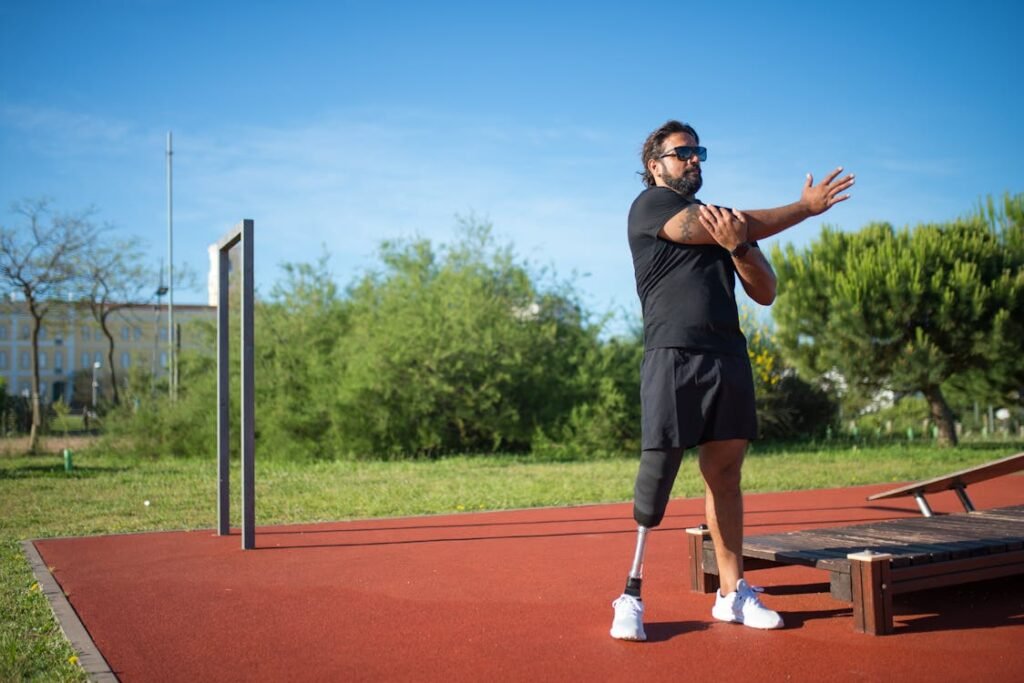
Long-Term Adaptation and Lifestyle with a Hemipelvectomy Prosthetic
Adjusting to a hemipelvectomy prosthetic is not just about rehabilitation—it’s about embracing a new way of life. Long-term success with a prosthetic depends on maintaining good physical health, keeping the prosthesis in optimal condition, and adapting daily activities to ensure comfort and mobility.
With time, users develop confidence in their movement and find ways to integrate their prosthetic seamlessly into their routine.
Maintaining Physical Health for Better Mobility
Using a hemipelvectomy prosthetic requires additional energy compared to walking with a natural leg. This means that maintaining strength and flexibility is important for long-term comfort.
Regular exercise helps keep the core, lower back, and remaining leg strong, which improves balance and reduces strain on the body.
Stretching exercises prevent stiffness, while strength training ensures that the muscles needed for movement stay active. Activities like swimming, yoga, and cycling are excellent for maintaining overall fitness while being gentle on the joints.
Many prosthetic users find that staying active improves not just their physical health but also their confidence in movement.
Weight management also plays a role in prosthetic comfort. Since the socket fits around the waist and pelvis, changes in weight can affect how the prosthetic fits.
Regular check-ups with a prosthetist help ensure that adjustments are made as needed to maintain a secure and comfortable fit.
Caring for the Prosthetic for Long-Term Use
Like any mobility aid, a hemipelvectomy prosthetic requires regular care and maintenance to function properly. The socket, joints, and foot should be inspected regularly for signs of wear.
Any unusual noises, stiffness, or discomfort may indicate that adjustments or repairs are needed.
The socket should be cleaned daily to prevent skin irritation and bacterial buildup. Using mild soap and warm water keeps it hygienic, while moisture-wicking liners help reduce sweating and friction.
Checking the skin for pressure points or redness ensures that the prosthetic is not causing discomfort.
For prosthetics with microprocessor-controlled joints, occasional software updates and battery checks may be required to keep the system functioning smoothly. A well-maintained prosthetic not only lasts longer but also provides a better overall experience for the user.
Adapting to Different Environments and Activities
One of the most rewarding aspects of adjusting to a hemipelvectomy prosthetic is returning to favorite activities. While the initial focus is on walking and everyday mobility, many users eventually explore hobbies like hiking, cycling, or even running with a specialized prosthesis.
Adaptive sports and recreational activities provide opportunities to stay active while improving balance and coordination.
Traveling with a prosthetic requires some planning, but with preparation, users can enjoy smooth experiences. Understanding airport security procedures, carrying extra prosthetic supplies, and choosing accessible accommodations make trips more comfortable.
Many users find that after adjusting to their prosthetic, they can navigate travel just as easily as before.
At Robobionics, we believe that life with a prosthetic should be as unrestricted as possible. Our team provides ongoing support to ensure that users continue to get the best performance from their prosthetic.
Whether it’s adjustments, rehabilitation guidance, or advanced prosthetic solutions, we are committed to helping every user regain independence and confidence.
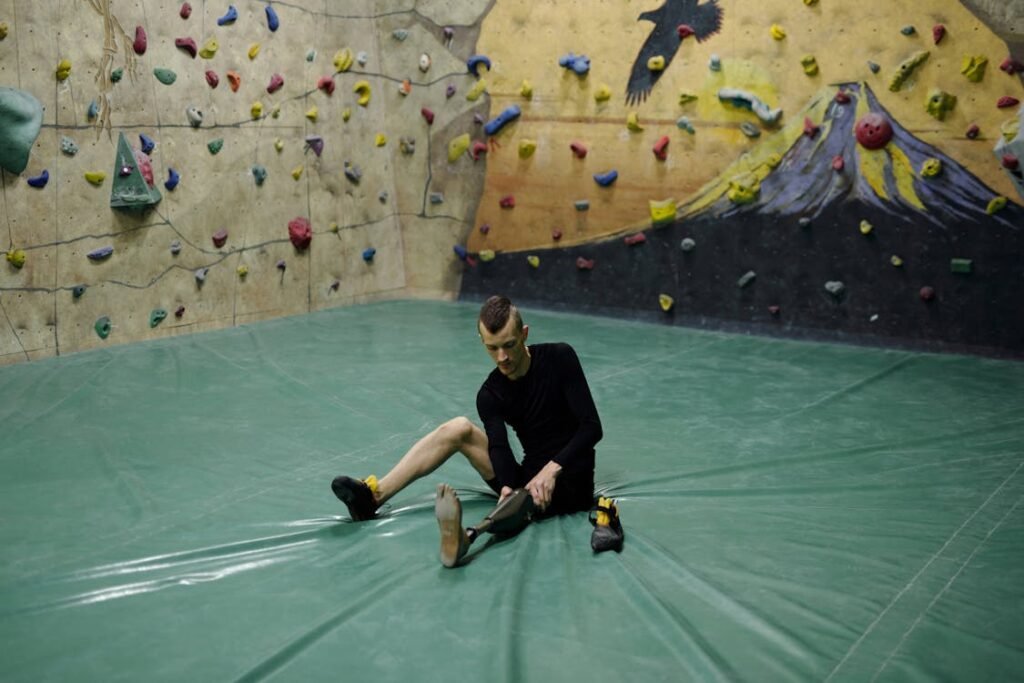
The Psychological and Emotional Journey of Using a Hemipelvectomy Prosthetic
Adjusting to a hemipelvectomy prosthetic is not just a physical process—it is an emotional journey as well. Losing a leg and part of the pelvis is a life-altering event, and while prosthetics restore mobility, they also bring psychological adjustments.
Many users experience a mix of emotions, from frustration to empowerment, as they adapt to their new way of moving. Understanding the emotional impact and finding strategies to build confidence can make the transition smoother and more fulfilling.
Overcoming the Fear of Standing Out
One of the most common emotional challenges is feeling self-conscious about using a prosthetic. Since hemipelvectomy prosthetics are larger and more complex than standard leg prosthetics, some users worry about how they will be perceived by others.
The thought of walking differently, using assistive devices, or needing extra time to adjust in social situations can create anxiety.
However, many users find that with time, they become more comfortable and confident. The key is to shift the focus from what is different to what is possible.
Instead of viewing the prosthetic as something that sets them apart, users can embrace it as a tool that restores their independence. Some even see it as a symbol of resilience, reminding them of their strength in overcoming adversity.
Talking to others who have gone through similar experiences can be incredibly helpful. Peer support groups, online communities, and mentorship programs allow users to share their concerns and gain perspective from those who have successfully adapted to a hemipelvectomy prosthetic.
Building Confidence in Movement
For many users, the fear of falling or struggling with mobility can be overwhelming at first. Since walking with a hemipelvectomy prosthetic requires different movements than before, it takes time to build trust in the device.
The initial learning curve can feel frustrating, especially when simple tasks like standing, sitting, or stepping onto a curb feel unfamiliar.
Confidence in movement comes with practice and patience. The more users engage in walking exercises, balance training, and real-world movement scenarios, the more they develop trust in their prosthetic.
Setting small, achievable goals—such as walking a short distance without support or standing for extended periods—helps users track progress and feel a sense of accomplishment.
Professional guidance plays a significant role in building confidence. Working with a prosthetist and physical therapist ensures that users receive the right techniques and adjustments to maximize comfort and efficiency.
The more comfortable and functional the prosthetic feels, the more natural movement becomes.
Navigating Social and Professional Life
Returning to work, social gatherings, or public places with a prosthetic can feel intimidating at first. Many users worry about how others will react, whether they will face questions, or if they will be able to keep up with daily demands.
Having a prepared mindset helps in these situations. Some users choose to openly discuss their prosthetic when asked, while others prefer to redirect conversations to other topics.
There is no right or wrong approach—what matters is that the individual feels in control of the interaction.
In professional settings, users may need to make small adaptations to their workspace, such as ensuring they have comfortable seating or access to areas with ramps or elevators.
Many employers are supportive and willing to accommodate mobility needs to create a comfortable work environment.
Over time, users realize that their prosthetic does not define them. Once they regain confidence in their abilities, they often find that they can engage in their social and professional lives just as they did before, with minimal limitations.
The Role of Mental Health Support
The emotional impact of limb loss and prosthetic use can sometimes lead to stress, anxiety, or even depression. It is important for users to acknowledge these feelings and seek support when needed.
Talking to a counselor, joining a support group, or engaging in activities that bring joy and relaxation can help maintain mental well-being.
Many users discover new passions or reconnect with old hobbies during their recovery journey. Creative outlets like art, writing, or sports can provide a sense of purpose and a way to express emotions.
The goal is to build a lifestyle that feels fulfilling, regardless of physical changes.
At Robobionics, we understand that adjusting to a prosthetic is about more than mobility—it’s about regaining confidence, purpose, and independence.
We are committed to supporting our users not just with high-quality prosthetics but also with the knowledge, encouragement, and resources they need to thrive.
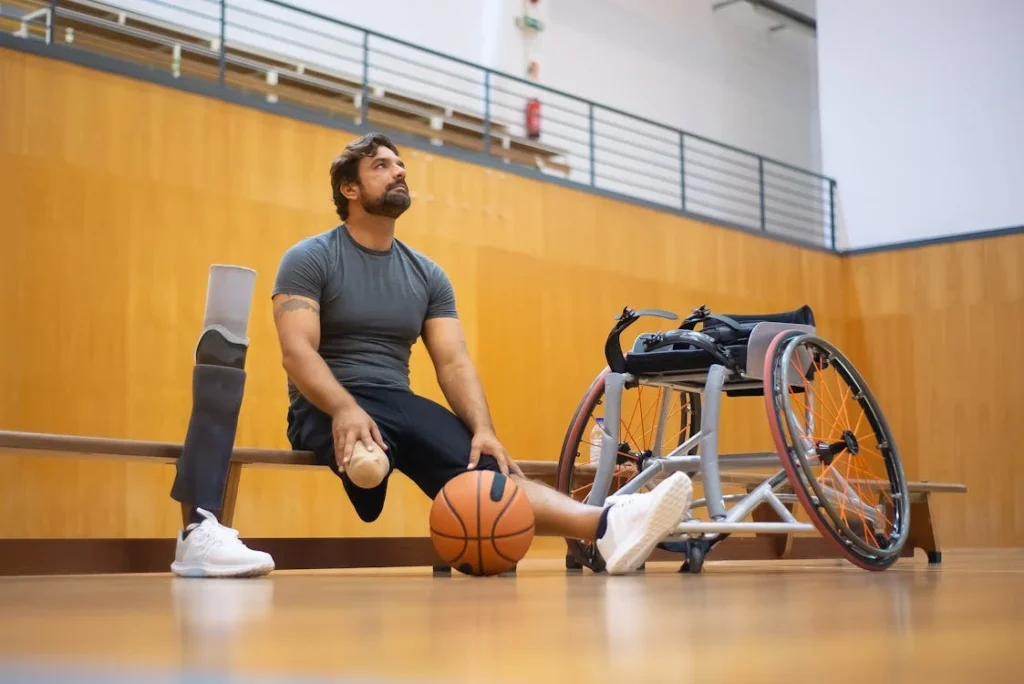
Innovations in Hemipelvectomy Prosthetic Technology
The world of prosthetic technology has advanced rapidly, making hemipelvectomy prosthetics more functional, comfortable, and adaptable than ever before.
The challenges of replacing both the leg and part of the pelvis have led to groundbreaking innovations that improve mobility, reduce strain, and enhance the overall user experience.
With cutting-edge materials, smart systems, and biomechanical research, today’s prosthetics offer a level of freedom that was once unimaginable.
Lightweight and High-Strength Materials
Traditional prosthetics were often heavy and bulky, making movement difficult and tiring. Modern hemipelvectomy prosthetics use lightweight materials such as carbon fiber, titanium, and medical-grade plastics.
These materials provide the strength needed for durability while significantly reducing weight, allowing users to move with less effort.
Carbon fiber, in particular, offers flexibility and energy return, meaning that when a user takes a step, the prosthetic absorbs and then releases energy, making walking more efficient.
This reduces fatigue and helps users maintain a more natural gait. Advanced silicone liners inside the socket also improve comfort by reducing friction and cushioning pressure points.
Microprocessor-Controlled Joints for Natural Movement
One of the biggest breakthroughs in hemipelvectomy prosthetics is the use of microprocessor-controlled hip and knee joints. Unlike traditional mechanical joints, which require the user to manually adjust their movement, microprocessor-controlled systems use sensors and artificial intelligence to analyze how the user is walking.
The prosthetic then automatically adjusts in real time to provide smoother, more natural movement.
For example, if a user is walking on flat ground, the prosthetic adapts to conserve energy. If they are walking uphill or on uneven terrain, the system provides additional support for stability.
Some advanced models even detect when a user is about to sit down and adjust the knee joint to make the movement easier. This level of responsiveness greatly improves confidence and reduces the physical effort needed to move.
Bionic and Mind-Controlled Prosthetics
While still in the early stages, research in bionic prosthetics is making it possible for users to control their prosthetic limbs using their own muscle signals or even brain activity.
These prosthetics use electrodes placed on the skin or implanted in the body to detect nerve signals and translate them into movement.
For hemipelvectomy users, this technology holds great promise in making walking more intuitive. Instead of relying solely on manual adjustments, future prosthetics could respond directly to the user’s thoughts or natural muscle contractions.
This could allow for smoother, faster movement and greater independence.
3D Printing for Custom Fit and Affordability
One of the biggest challenges with hemipelvectomy prosthetics is ensuring a perfect fit. Every user’s body shape is unique, and even small differences in socket design can affect comfort and performance.
3D printing technology has revolutionized prosthetic manufacturing by allowing for fully customized designs at a fraction of the time and cost of traditional methods.
With 3D scanning, prosthetists can create an exact digital model of a user’s body and print a socket that fits perfectly. This reduces the trial-and-error process of adjustments and makes prosthetics more accessible.
Additionally, 3D printing allows for modular components, meaning that if a part of the prosthetic wears out, it can be replaced individually rather than requiring a full prosthetic replacement.
Smart Prosthetics with Mobile Integration
Technology is also making it easier for users to track their prosthetic performance through smartphone apps. Some modern hemipelvectomy prosthetics connect to mobile apps via Bluetooth, allowing users to monitor step count, walking patterns, and battery life for microprocessor-controlled joints.
These apps provide real-time feedback, helping users adjust their gait and improve efficiency.
For users with adjustable suspension systems, mobile integration allows them to fine-tune the fit of their prosthetic throughout the day. If the socket feels too tight or loose, they can make minor modifications through the app without needing an immediate visit to a prosthetist.
The Future of Hemipelvectomy Prosthetics
The next decade promises even more exciting advancements in prosthetic technology. Researchers are working on prosthetics with sensory feedback, which would allow users to “feel” sensations like pressure, temperature, or texture through artificial nerves.
This could significantly improve stability and awareness while walking.
At Robobionics, we stay at the forefront of prosthetic innovation to provide our users with the latest technology available.
Our commitment is to offer prosthetic solutions that not only restore mobility but also enhance quality of life through comfort, efficiency, and advanced functionality.
Conclusion
Choosing the right hemipelvectomy prosthetic is a life-changing decision that impacts mobility, comfort, and overall well-being. Modern prosthetic technology has made it possible for users to regain independence with lightweight materials, advanced joint systems, and custom-fitted designs. While the adjustment period can be challenging, proper rehabilitation, confidence-building, and long-term care ensure a smooth transition to using a prosthetic.
Beyond physical movement, the emotional and psychological journey of adapting to a prosthetic is just as important. With the right support, mindset, and technology, users can return to their favorite activities, regain confidence in social situations, and live a fulfilling life. Advances in microprocessor-controlled joints, 3D printing, and bionic technology continue to push the boundaries of what prosthetics can achieve, making movement more intuitive and natural than ever before.
At Robobionics, we are committed to providing high-quality, innovative prosthetic solutions tailored to each user’s needs. Whether you are exploring your first prosthetic or looking for an upgrade, we are here to guide you through the process. Contact us today to learn how we can help restore your mobility and independence.



